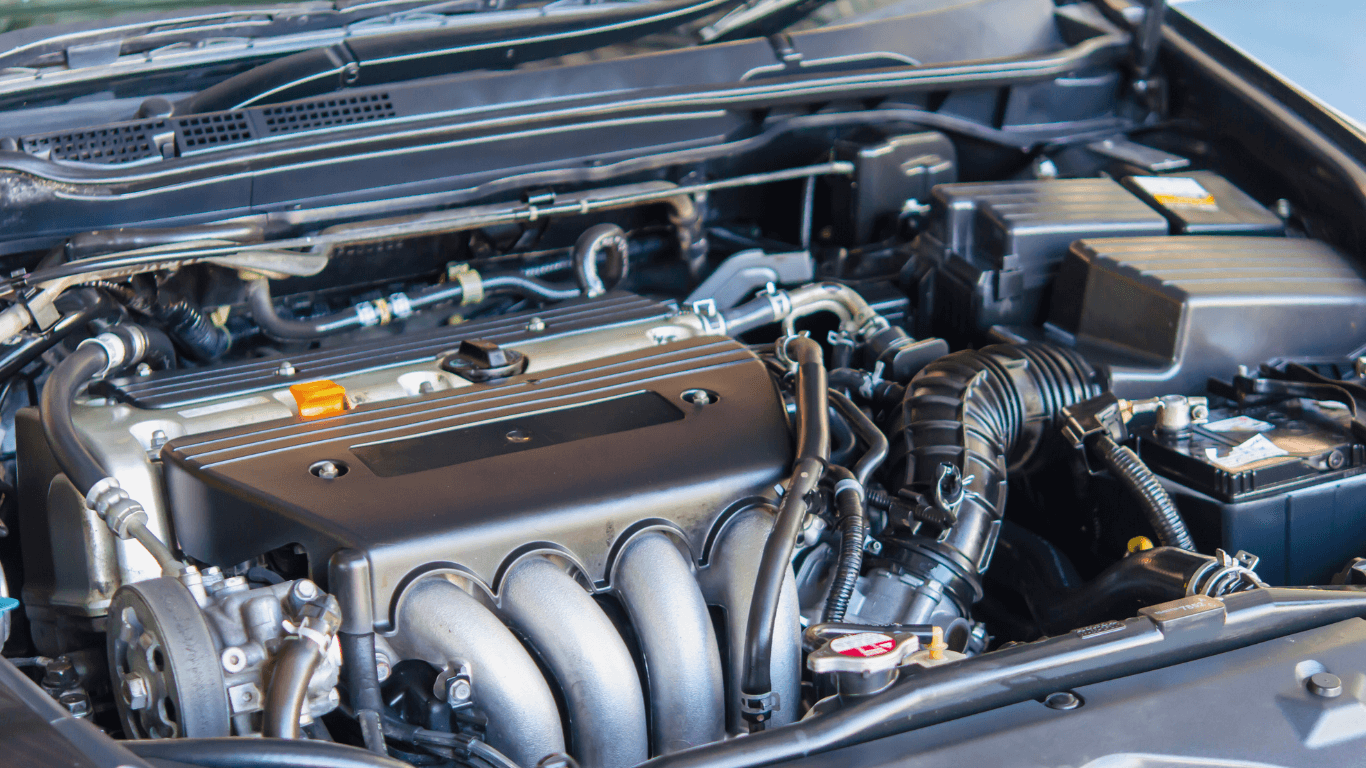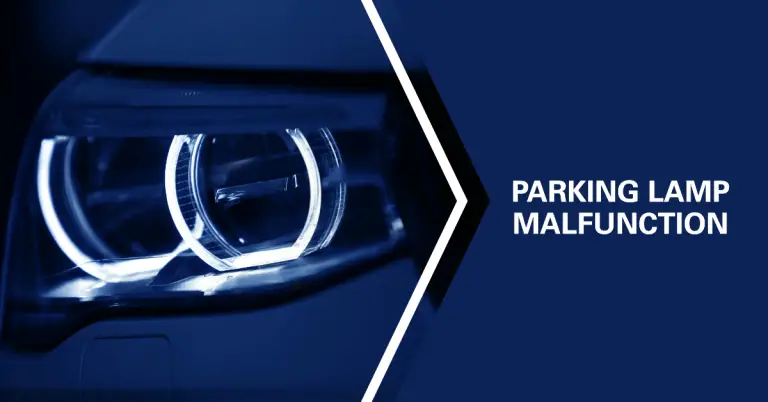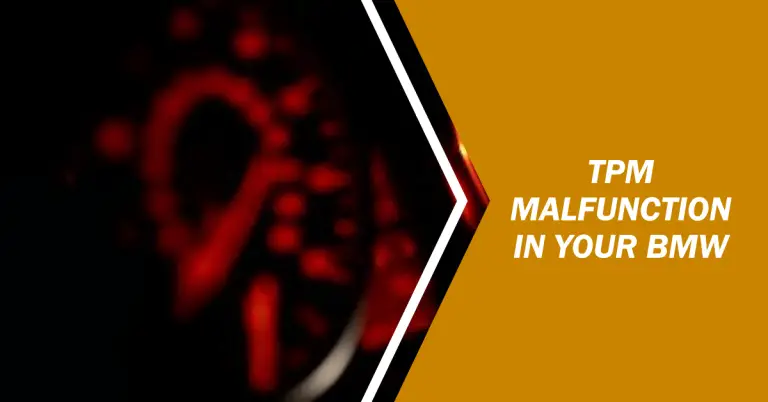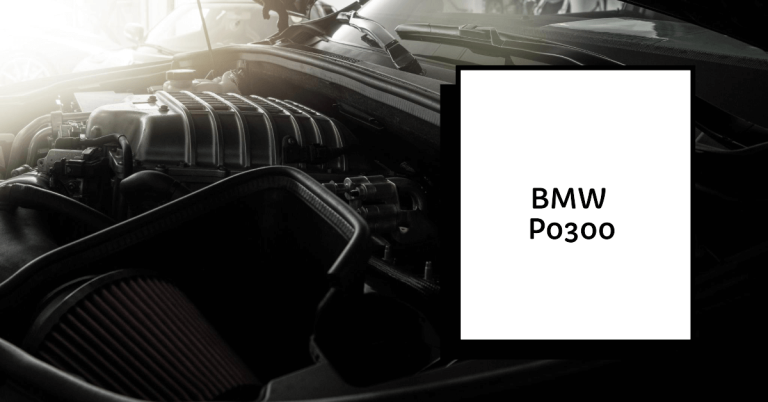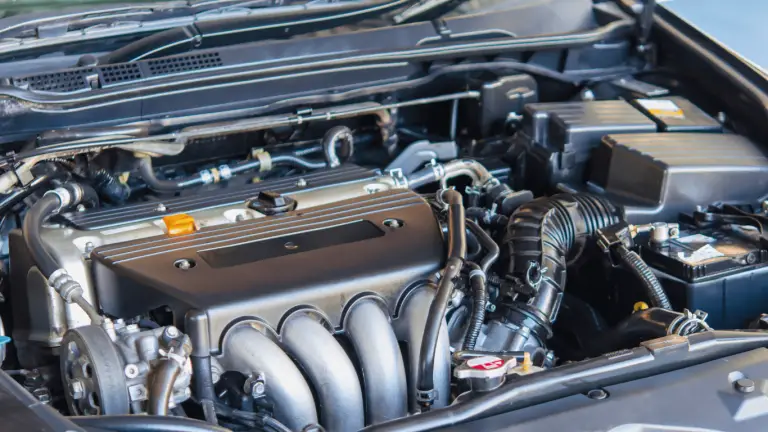BMW Engine Malfunction: Fix Reduced Power & Engine Faults
Your BMW was engineered for exhilarating speed and handling. But when dashboard warnings flash about reduced engine power or the dreaded “limp mode” activates, that BMW performance and acceleration you love disappears.
What’s causing BMW drivetrain malfunctions leading to a loss of power? Read on to learn the top causes and solutions to restore your BMW’s engine to full power when warning lights dim your driving excitement.
Having your BMW suddenly lose power and go into reduced power or limp mode can be puzzling, annoying, and make your vehicle unsafe in some situations, like merging onto a highway. Many BMW owners face these power reducing engine faults at some point in their vehicle’s lifecycle.
The goal of this detailed guide is to help BMW drivers better understand the meaning behind common BMW error messages related to reduced engine power and limp mode. You’ll also gain troubleshooting tips to diagnose BMW engine problems and learn definitive solutions to resolve power limitations when the check engine light comes on.
What Triggers BMW Engine Malfunction Lights?
Modern BMW models are equipped with sophisticated on-board diagnostics that constantly monitor critical vehicle systems, including the engine and transmission. When a component operates outside of normal parameters, the digital motor electronics (DME) module detects a fault and turns on a malfunction indicator light (MIL) or “check engine light” on the dashboard.
The BMW engine control unit (DME) takes further action to protect drivetrain components from damage by initiating reduced power or limp modes. It limits engine rpm, torque output, and vehicle speed. Your BMW goes into a self-preservation mode.
These engine fault messages vary slightly by model:
- “Engine Malfunction. Drive Moderately – Power Reduced”
- “Drivetrain Malfunction: Power Output Reduced”
- “Limp Mode Activated”
Flashing warnings or indicator lights pointing to specific problems like DSC/xDrive may accompany the check engine light. Your BMW enters limp mode or reduced power even if the MIL bulb itself is burnt out and you don’t visually see the warning.
Key Reasons for BMW Power Reduction & Limp Mode
Many underlying issues can trigger limp mode and reduced engine power on BMW models. By diagnosing fault codes stored in the DME, you can pinpoint the exact problem.
Here are the most common root causes of drivetrain malfunctions that lead to restricted engine RPM and speed on BMWs:
- Transmission problems – Faulty transmission components like solenoids, clutches, gears cause the DME to limit power as a precaution.
- Electrical system faults – Short circuits or faulty sensors trick the DME into lowering output. Common with crankshaft and camshaft sensors.
- Fuel or air delivery issues – Problems with fuel injectors, air flow sensors, throttle bodies disrupt air/fuel ratio leading to power loss.
- Overheating – Elevated coolant or oil temperatures trigger immediate power reduction to avoid engine damage.
- Turbo or supercharger failures – Issues with boost systems will put your BMW into limp mode.
Keep reading to fully understand the major reasons for BMW drivetrain malfunctions and how to resolve them. We’ll also cover steps for resetting engine warning lights after addressing the root cause.
Common Causes of BMW Reduced Engine Power Mode
Let’s take a deeper look at the most frequent issues that initiate power limiting limp modes in BMW models:
1. Throttle Body Malfunctions
The throttle body regulates air flowing into the engine based on accelerator pedal position. It contains a throttle position sensor (TPS) that monitors if the throttle plate is opening and closing properly.
Common problems with the throttle body assembly that lead to BMW limp mode include:
- Carbon buildup – Throttle plates stick due to carbon formation causing uneven air induction. Easy DIY cleaning can resolve this issue.
- Worn throttle shaft – Excess play in the shaft changes TPS voltage readings leading to engine faults. Replace the throttle body.
- Faulty TPS – Sensor wears out or gets contaminated resulting in incorrect readings. Replace the throttle position sensor.
- Electrical faults – Shorts or bad wiring cause erratic TPS signals. Check wiring for damage, corrosion.
A failing throttle body is a frequent source of BMW reduced power problems. After cleaning or replacement, reset BMW limp mode in the proper sequence.
2. Mass Air Flow Sensor Malfunction
The mass air flow (MAF) sensor calculates the air volume entering the engine to determine required fuel levels. It’s a common failure point leading to lean air/fuel conditions that reduce power.
Typical causes of MAF sensor issues:
- Contaminated hot wire element – Dust or oil coats the sensing wire altering its readings. Use MAF cleaner spray.
- Failed hot wire – The sensing element inside can wear out over time and needs replacement.
- Leaks in intake piping – Small vacuum leaks diminish air flow reaching the MAF, causing understated readings.
- Bad wiring – Corrosion or damage in MAF wiring leads to P0100-P0103 trouble codes.
When the ECU detects improbable MAF readings that don’t match other sensors, it limits power as a precaution. Faulty air flow sensors are a prevalent issue causing BMW reduced engine power.
Clogged Air Filters
A restricted air filter starves the engine of air leading to insufficient combustion and power loss. The DME detects the resulting lean condition and takes measures to protect the drivetrain from damage.
Warning signs of a blocked air filter:
- Visibly dirty, covered in debris
- BMW runs rough at idle, lacks power under acceleration
- MAF sensor readings don’t match calculated air volume
Regular air filter inspection and changes prevent limp mode situations. After installing a clean filter, perform an adaptation reset for maximum power restoration.
Spark Plug and Ignition Coil Failures
Problems with spark delivery have huge effects on combustion and BMW engine performance. Misfires, weak sparks, and electrical faults force the DME to reduce output to guard against engine damage.
Typical spark system issues include:
- Worn or fouled spark plugs – Normal wear or carbon/oil fouling cause misfires. Replace spark plugs at recommended intervals.
- Leaking ignition coils – Internal coil leakage reduces voltage. Swap affected coils to isolate problem cylinder(s).
- Bad ignition coil pack – Entire coil pack can short out or fail mechanically. Replace if troubleshooting identifies pack.
- Damaged spark plug wires – Cracks in high tension leads interrupt voltage delivery. Inspect wires condition closely.
Repair spark-related faults causing misfires, then reset engine codes. BMW spark system issues can happen gradually, so monitor for power loss.
BMW Fuel Injector Failures
Fuel injectors precisely meter fuel delivery into each cylinder. The DME monitors signals from each injector’s output control valve to check for deviations. Common problems leading to power reductions include:
- Clogged injectors – Carbon deposits restrict flow and disrupt spray patterns. Use professional fuel injector cleaning services.
- Leaking injectors – Excess fuel entering engine disrupts air-fuel ratio. Pressure test system to identify bad injectors.
- Electrical faults – Open or shorted injector circuits cause erratic signals back to the DME.
- Low injection or rail pressure – Weak pump pressure prevents proper fuel atomization.
Dirty injectors are a widespread root cause of poor engine performance and limp mode activation in BMWs. Keep them clean to avoid reduced power issues.
BMW Camshaft and Crankshaft Sensor Defects
Camshaft and crankshaft sensors are critical for BMW engine timing. They send signals about cam/crank position and speed to synchronize injection and spark. Sensor failures confuse the DME leading to misfires, stumbling issues that are precursors to limp mode:
- Magnet deterioration – Sensing accuracy declines as the magnetic ring’s strength fades over time.
- Bad sensor wiring – Faults in electrical connections cause intermittent signal loss.
- Sensor replacement errors – Incorrect orientation or air gap settings disrupt sensor input.
- Internal component failures – Mechanical or electrical defects inside the sensor itself.
These crank/cam sensors are wear items to monitor as mileage increases. Replace immediately if faulty sensor signals trigger BMW limp mode.
BMW Cooling System Failures
Engine overheating is a serious issue the DME takes drastic steps to prevent. It enters a protective power limiting mode at the first sign of excessive coolant or oil temperatures.
Common causes leading to overheating and limp mode:
- Thermostat failure – Stuck closed thermostat prevents coolant circulation. Replace thermostat immediately if you suspect it’s faulty.
- Coolant leaks – Low coolant allows overheating and heat buildup in cylinder heads. Address any external or internal leaks.
- Radiator fan malfunction – Electric fans not switching on leads to rising temperatures at low speeds or when stopped. Diagnose fan relay, circuit, and motor issues.
- Oil cooler leaks – Defective oil cooler allows oil into cooling system. Pressure test for external leaks.
If BMW overheating activates limp mode, safely pull over and allow engine to fully cool before continuing to avoid catastrophic engine damage from heat.
Vacuum System Leaks
Even small vacuum leaks confuse the DME since air gets drawn in downstream of the MAF sensor. The ECU detects the resulting lean air/fuel ratio and limits power as a failsafe.
Common leak points:
- PCV valve and hoses – Cracks in the crankcase vent system allows unmetered air. Inspect valve and all connected hoses.
- Intake gaskets – Hardened intake gaskets allow vacuum loss. Reseal intake areas between cylinder head, throttle body, manifold, and mass air sensor.
- Vacuum line holes – Check along the brake booster line and other vacuum system hoses for cracks or punctures.
Use a smoke machine during inspection to locate even tiny vacuum leaks impacting BMW engine performance and causing reduced power mode activation.
FIxing BMW Limp Mode & Restoring Lost Power
Now that you know the major causes of BMW drivetrain malfunctions leading to limited power and limp mode, let’s cover some key steps to diagnose and repair the problems:
Diagnosing BMW Engine Faults
Pinpointing the root cause is the critical first step to correcting issues:
- Retrieve BMW trouble codes – Scan tool lets you access fault memory in the DME to see issues.
- Thorough inspection – Check components known to commonly fail on your engine like sensors, spark plugs, ignition coils, injectors.
- Monitor live data – View sensor measurements during test drives to identify outliers.
- Perform pressure tests – Check for leaks in cooling system and fuel system.
- Follow repair manual troubleshooting – Reverse engineer issues back to root cause.
Accurate troubleshooting avoids guesswork repairs when BMW engine faults strike.
Repairing Underlying Issues
Typical BMW limp mode repairs include:
- Replacing worn sensors – Crankshaft position sensors, camshaft sensors, MAF sensors are common replacements to restore proper signals.
- Cleaning dirty fuel injectors – Have injectors professionally cleaned and flow tested. Replace any injector outside 15% variance.
- Swapping ignition coils – Replace coils for cylinders with misfire faults.
- Fixing vacuum leaks – Inspect and reseal intake areas. Replace damaged vacuum hoses.
- Flushing coolant system – Drain and refill cooling system to address overheating issues or contamination.
- Throttle body cleaning – Use BMW throttle body cleaner to resolve carbon buildup issues.
- Replacing turbo/supercharger – Major boost system component failures may require turbo or supercharger rebuild or replacement.
Correct the underlying reasons for BMW reduced power mode for a lasting fix. Avoid just resetting codes without fully addressing root causes.
Resetting BMW Limp Mode & Fault Codes
The final step is to clear error codes and reset adaptations so your BMW exits limp mode:
- Diagnostic scanner reset – Use a scanner tool to erase DME fault memory. Cycle ignition after reset.
- Battery disconnect – Unhook battery for 15 minutes to clear codes and allow DME to reboot.
- Drive cycle – Complete an emissions readiness drive cycle to trigger monitors to run and reset status.
A BMW should return to full power after diagnosing issues, making repairs, and resetting the system. Contact a professional BMW mechanic if problems persist after attempted fixes.
Avoiding Future BMW Engine Malfunctions
You can help prevent BMW reduced power problems and keep your engine running in peak form by:
- Staying up to date on maintenance – Follow the prescribed maintenance schedule in your owner’s manual. Don’t skip intervals.
- Fixing problems early – Address check engine lights, rough running, leaks immediately to prevent bigger issues.
- Using quality fuels – Use premium grade gasoline recommended for your engine. Quality makes a difference.
- Monitoring sensor health – Watch for gradual check engine light/misfire situations indicating a worn crank/cam sensor.
- Checking engine oil – Maintain proper oil level and condition. Oil tests can show early wear.
- Tracking mileage – Note mileage at which issues occurred. Components like sensors tend to fail at consistent intervals as they wear.
With proper care and maintenance, your BMW can go 100,000+ miles without limp mode or other engine performance issues. Stay proactive and enjoy the ultimate driving experience your BMW was engineered to deliver.
When to Seek Professional BMW Service?
DIY maintenance and having your own scanner tool can resolve many BMW reduced power problems. But visit a professional BMW repair shop if:
- You lack time or mechanical skill for complex repairs like timing chains, turbochargers, transmission rebuilds.
- The issue persists after troubleshooting and your attempted fixes. A second set of expert eyes can help.
- The check engine light returns shortly after resetting, indicating an underlying problem remains.
- Your BMW is still under factory warranty. Dealership service may be required based on the repair.
Seeking help from a certified BMW mechanic provides peace of mind that repairs are done comprehensively and correctly the first time. Their expertise can accurately diagnose BMW drivetrain faults and restore your ultimate driving machine to peak performance.
Conclusion
Having your BMW suddenly go into reduced power or limp mode limits your vehicle’s capabilities and takes the fun out of driving. But understanding common causes for engine malfunctions related to throttle, sensors, misfires, overheating and more allows you to get back on the road to driving enjoyment faster.
Follow the engine troubleshooting tips covered to correctly identify why your BMW entered failsafe mode. Repair faulty components with solutions like cleaning/replacing sensors, addressing vacuum leaks, replacing worn parts. Then complete the proper reset procedure so your BMW engine can deliver its full performance potential once again.

